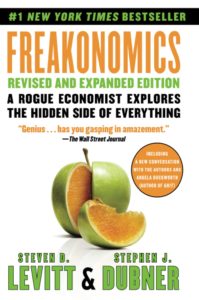This one needs no introduction, so let’s jump right in. Here’s a brief summary of Roe v. Wade in 10 numbers.
19
The number of the book of the Bible (Psalms) that contains a passage interpreted by some to confirm that life starts with conception. Specifically, that’s Psalm 139:13-16 in the Old Testament, which states: For you formed my inward parts; you knitted me together in my mother’s womb. I praise you, for I am fearfully and wonderfully made. Wonderful are your works; my soul knows it very well. My frame was not hidden from you, when I was being made in secret, intricately woven in the depths of the earth. Your eyes saw my unformed substance; in your book were written, every one of them, the days that were formed for me, when as yet there was none of them.
24
The gestational age in weeks at which a fetus is generally considered capable of surviving outside the uterus (albeit with a reasonable chance of long-term complications).
5
The number of US states—Alaska, California, Hawaii, New York, and Washington—that had repealed their abortion bans prior to the Roe v. Wade ruling. Texas, not being one of them, served as the epicenter of what was to come.
1969
The year Norma McCorvey, known by the pseudonym Jane Roe in what would eventually become the landmark US Supreme Court case, sought an abortion in Texas. Given the state’s ban on the procedure (except for the purpose of saving a woman’s life), McCorvey gave birth to the child—her third—in 1970, and, as she had done with her two older children, opted for the route of adoption. Of course, the lawsuit she had filed against Henry Wade—district attorney of Dallas County, Texas—regarding the constitutionality of the state’s abortion laws would also take on a life of its own.
1973
The year the US Supreme Court, after hearing the case twice due to the appointment of two new justices in the intervening period of time, issued its decision in Roe v. Wade.
14
The number of the constitutional amendment that proved central to the Supreme Court ruling. In particular, the Due Process Clause of that amendment was felt to provide a right to privacy that protected a woman’s liberty to choose whether to have an abortion, thus striking down many restrictive federal and state abortion laws. The right was not felt to be absolute, however, and it had to be balanced against the government’s interest in protecting women’s health and prenatal life. The Court tied the degree of permissible regulation to the specific trimester of pregnancy, with no restrictions in the first trimester and no bans prior to the third trimester (understood to be around 28 weeks).
7
The number of justices in concurrence with the ruling, leaving two dissenting opinions.
1992
The year the Supreme Court heard Planned Parenthood v. Casey, upholding the constitutional right to an abortion as established by Roe v. Wade. The Court did, however, abandon the trimester framework in favor of a framework tied to the murkier concept of fetal viability, paving the way for state laws that can place restrictions earlier in pregnancy. The Court also replaced something called a strict scrutiny standard regarding abortion-related laws with one that focused on limiting undue burden on those seeking abortion, leaving the door open to debate regarding what is and isn’t burdensome.
>0
The correlation between the increase in abortions after Roe v. Wade and the drop in crime that was seen in the 1990s. That’s according to the bestseller Freakonomics.
2017
The year Norma McCorvey died (at the age of 69). She spent her last several decades as both a pro-choice advocate and a pro-life activist, though payment may have prompted the latter position.
For a more thorough summary of Roe v. Wade, just read the homemade signs that people hold on street corners. Or check Facebook.

2 Responses
Great summary by the numbers. I can’t wait to get more facts from street signs and social media!
Thank you. Hahaha.